Objective of Rummikub
The objective of Rummikub is to play all of the tiles from your rack before the other players in order to score the most points.
Setup for Rummikub
- Place all of the tiles face down on the table. Mix them up thoroughly.
- Each player chooses a tile at random. The player that draws the highest number starts the game.
- All of the players return their tile to the table. Mix up all of the tiles again.
- Each player randomly draws 14 tiles and adds them to their rack. The rest of the tiles form the “pool”.
- You will decide how many rounds that you want to play. In each round you will play a number of games equal to the number of players. For example you decide to play two rounds with four players. You will play four games in round one, and then play the second round which also has four games in it.
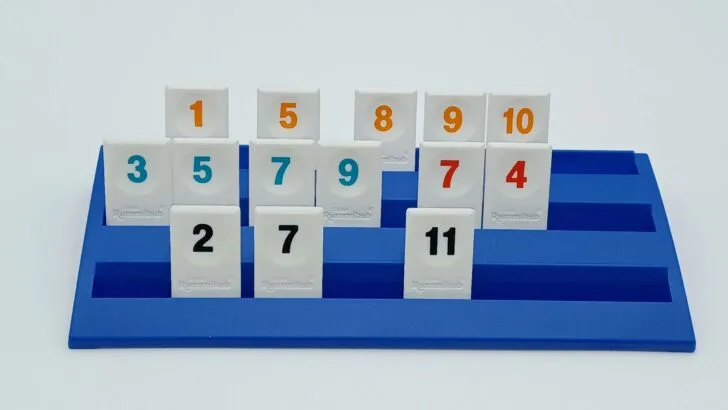
Creating Sets
The gameplay of Rummikub is built around creating sets. When you play tiles to the table you will play them to a set. There are two different types of sets in Rummikub.
First you can play tiles in a group. A group consists of tiles of the same number that are different colors. You can play between three and four tiles to a group. Each tile in the group has to be the same number, and each tile in the group has to be a different color.
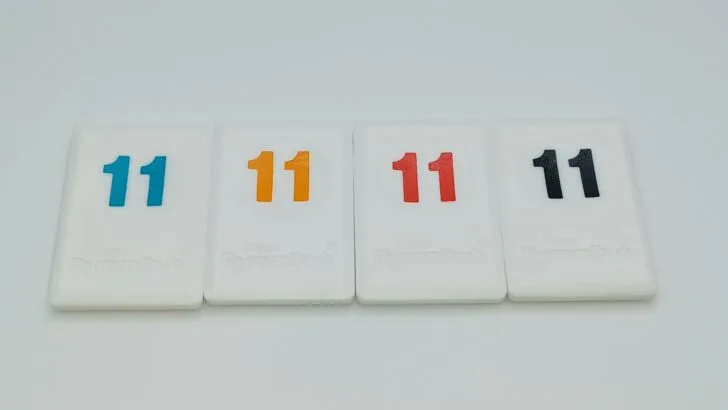
Otherwise you can play tiles in a run. A run consists of three or more tiles in numerical order. Each tile in the run has to be one number higher than the previous tile. All of the tiles in a run have to be the same color. Ones are always considered the lowest number in a run. You can not play a one after a thirteen.
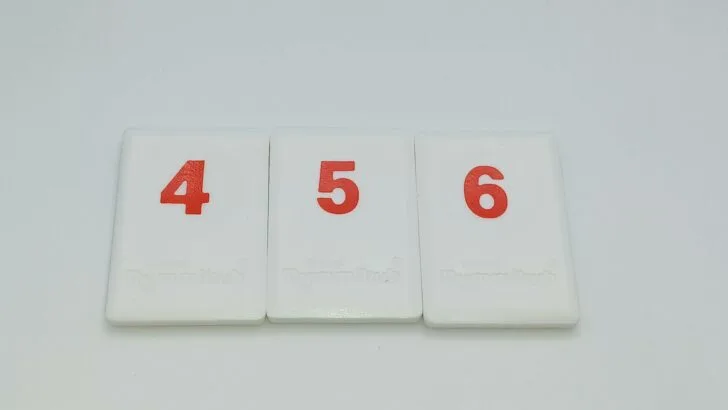
You can play a joker tile as any other tile in the game. It can represent any color and any number.
Playing Rummikub
On your turn you will try to play tiles from your rack to the table. You can only play tiles to the table if you can create a group or run. You can play multiple different groups or runs on your turn.
Initial Meld
To start each game you need to create an initial meld. When you are creating an initial meld you can only use the tiles in your own rack. Each tile is worth the number printed on it. Jokers count as the number that they are representing. For your initial meld you must play tiles that add up to at least 30 points.
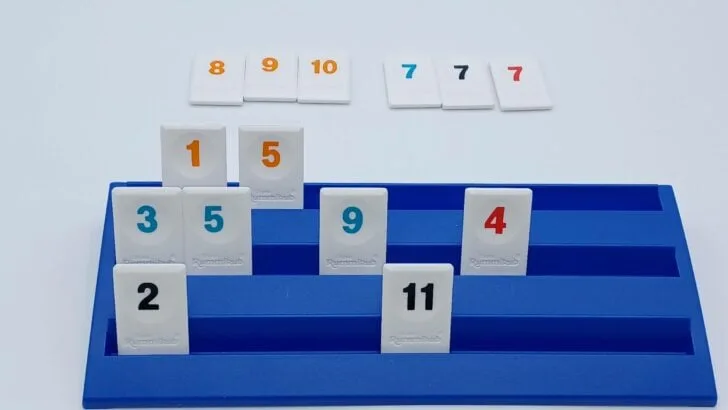
If you are unable to play tiles on your turn, you will draw a tile from the pool. Your turn then ends.
Playing Tiles After Your Initial Meld
After you create your initial meld, you have more freedom with playing tiles. You still need to play tiles in either groups or runs. You can also use tiles that are already on the table. See the Building Onto Sets section below for more details.
You can play as many tiles from your rack as you want on your turn. You have one minute to play, and move as many tiles as you want. At the end of your turn all of the tiles on the table must be in a valid group or run. If you go over the limit, you must draw one tile from the pool.
At the end of your turn there must be at least three tiles in each set, and they must follow the rules of either a group or run. If a player creates incomplete groups or runs, all tiles are returned to their previous positions from before the player took their turn. The player also has to draw three tiles from the pool. Their turn then ends.
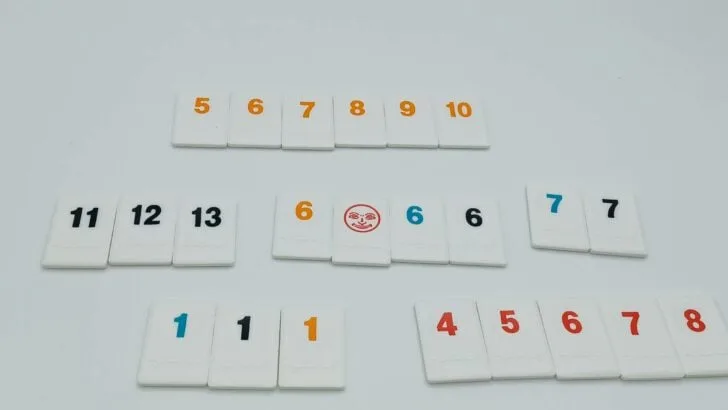
If you are unable to play any tiles or choose not to play any, you will draw one tile from the pool. Your turn then ends.
If the pool ever runs out of tiles, the players will keep taking turns playing tiles. Players will no longer draw new tiles.
Jokers
Joker tiles are unique in Rummikub as they can act as any other tile in the game. There are two Jokers in the game.
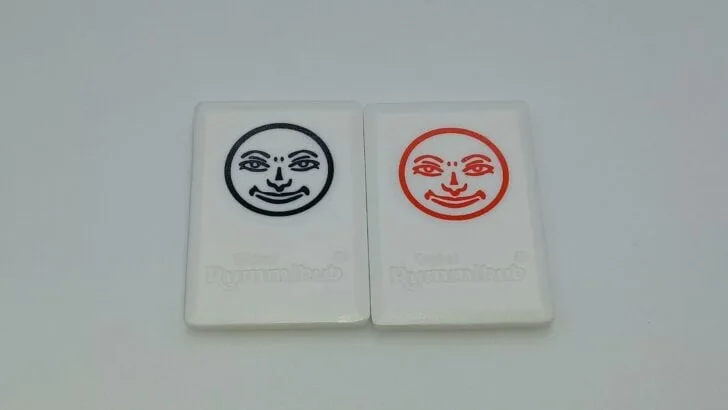
When you play a Joker along with other tiles, it will act as the number and color that is required to complete the group/run.
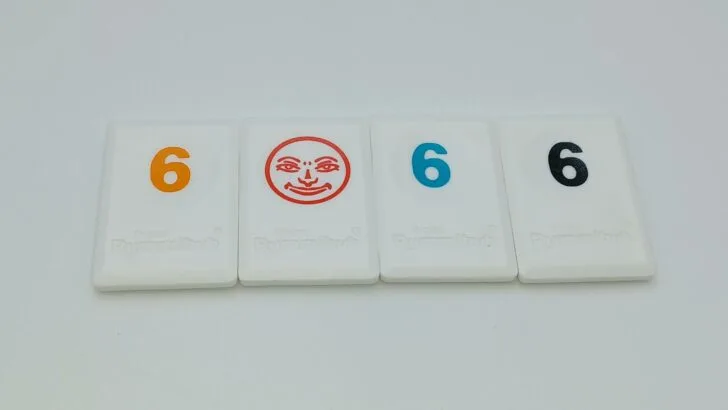
On a future turn any player can retrieve a played Joker. After you have completed your initial meld, you can retrieve a Joker if you play the exact tile to a set that the Joker is representing. This exact tile can come from your rack or from a set already on the table. If a Joker can represent two different colors or numbers in a group, you can replace the Joker with either of the two colors/numbers.
Once you retrieve a Joker, you must use it on the same turn. The Joker can represent any number and color. You must use the Joker to create a new set. This new set needs to use at least one tile from your rack.
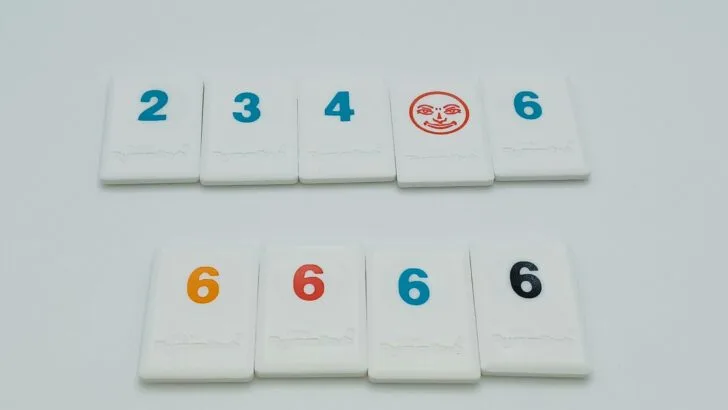
Building Onto Sets
Once you have created your initial meld, you have a lot more options on your turn. You can now use any tiles that have already been played to the table. You can take tiles from a set to help create a new set, or you can combine tiles from several sets. The only rule is that each set must be valid with at least three tiles at the end of your turn. Some ways you can use tiles already played to the table are as follows:
Adding to Sets
If you have tiles in your rack that can be played to the front and/or the end of a run, you can add them to the run.
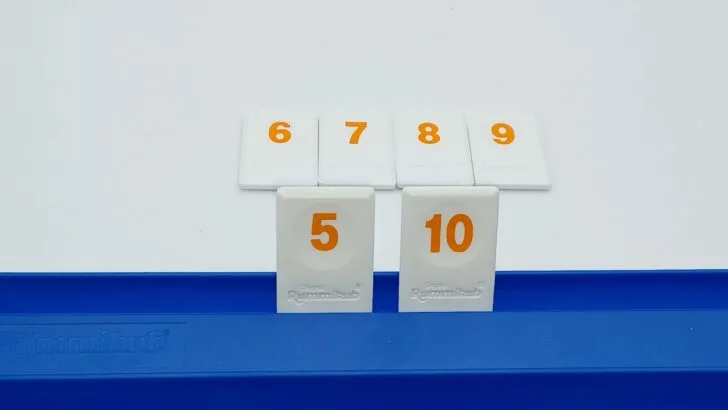
Should a group have four tiles in it, you can remove one of the tiles to add it to another set.
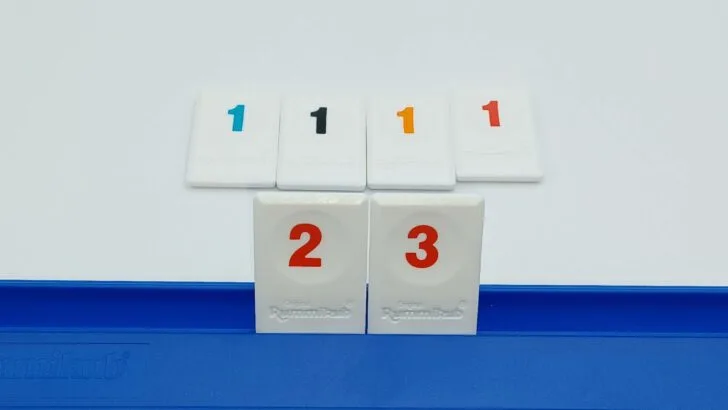
If a set only has three tiles you can add a tile to the set. You can then take one of the tiles from the new set and add it to another set. If a set already has four or more tiles, you can remove tiles from the set to create a new set as long as at least three tiles remain in the original set.
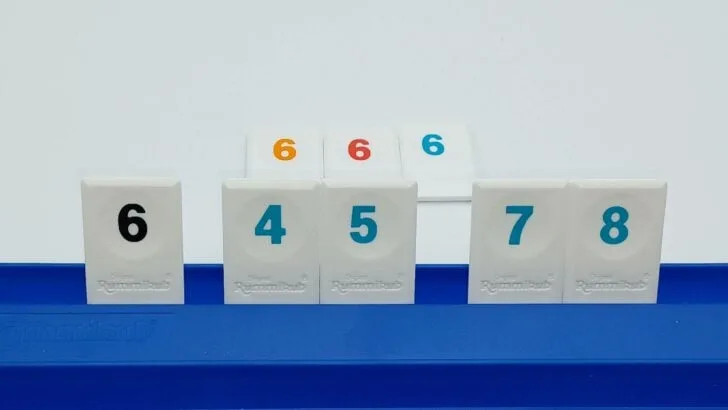
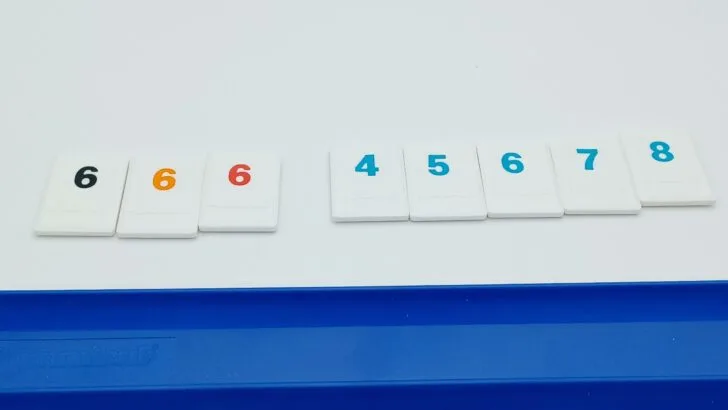
You can choose to split up a longer run in order to create two smaller runs. Each run needs at least three tiles.

Creating New Sets
There are also a number of ways that you can split groups and runs in order to create one or more new runs. You can use tiles from your rack in addition to tiles you take from the current sets.
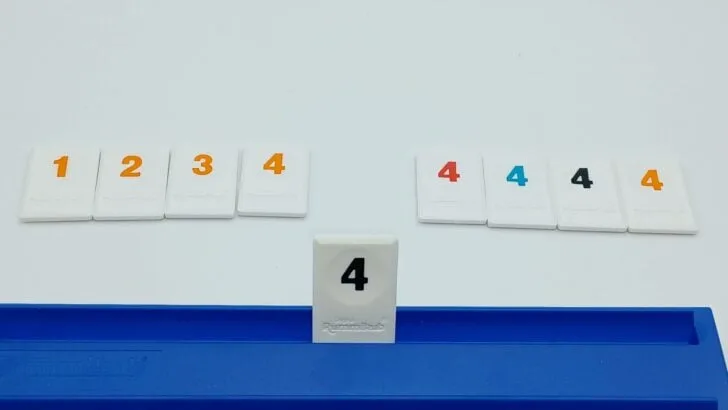
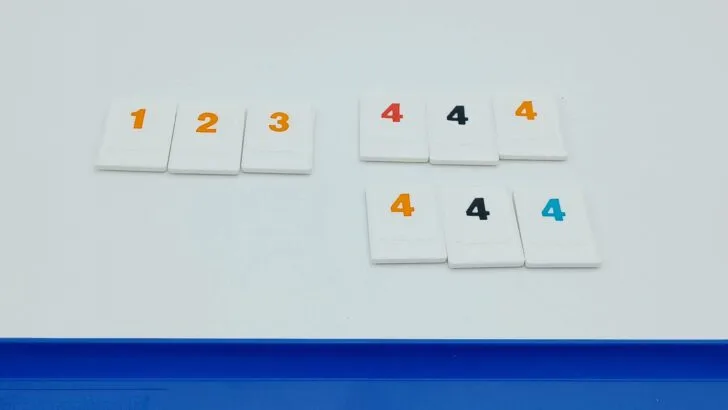
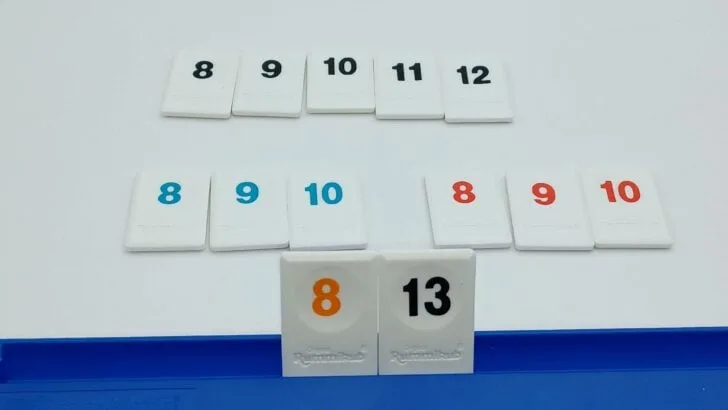
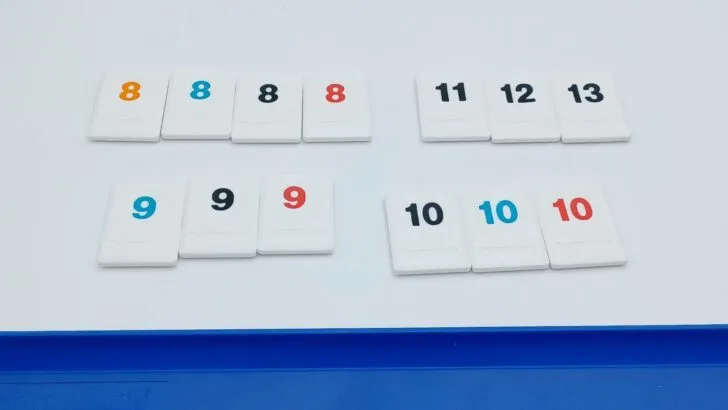
Scoring
A game ends whenever one of the players plays the last tile from their rack.
At this point all of the players count up the points left on their racks. Each tile is worth the amount printed on it. Jokers are worth 30 points.
Each player scores negative points for the tiles left in their rack.
The winner of the game adds up all of the points scored by the other players. They will score positive points equal to the total of the points from all of the other players.
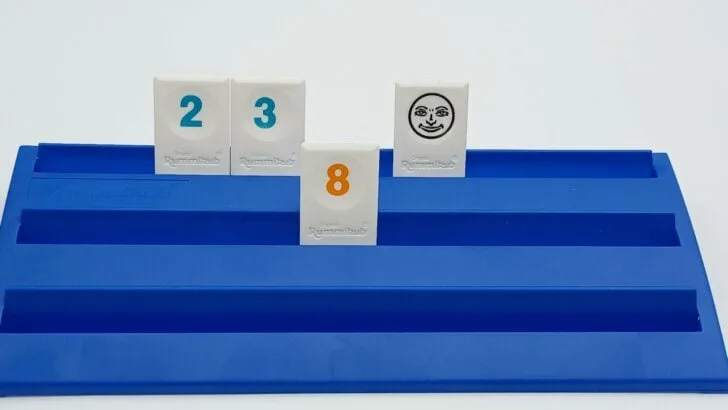
Should all of the tiles be taken from the pool and none of the players are able to play all of the tiles from their rack, the round ends. Each player counts up the points left on their rack. The player with the least points on their rack wins the current game. All of the players take the total of points in their rack and subtract it from the total on the winner’s rack. They will score negative points equal to the difference. The winner earns positive points equal to the total points earned by the rest of the players.
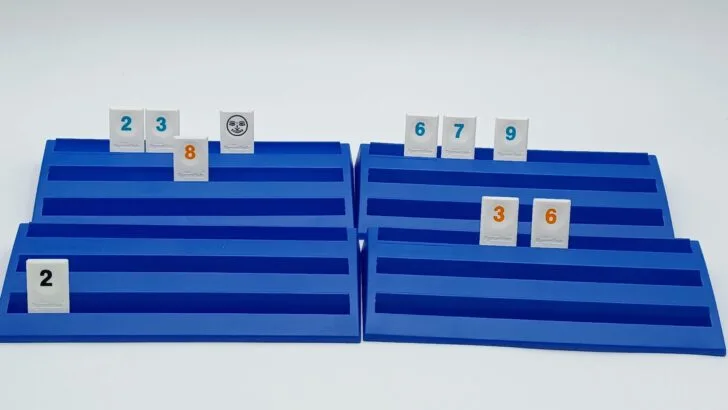
You should write down the amount of points each player scores each game.
Setting Up the Next Game
To set up for the next game you will return all of the tiles face down to the table. You will then setup the next game following the rules in the setup section.
Winning Rummikub
The game ends when the agreed number of rounds and games have been played.
The player that won the most individual games, wins Rummikub.
If there is a tie, the tied players compare their total scores from all of the games. The tied player who scored the most positive points, wins the game.
Rummikub FAQs
If you have any questions about how to play Rummikub, leave a comment below on this post. I will try to answer any questions asked as best and as quickly as possible.
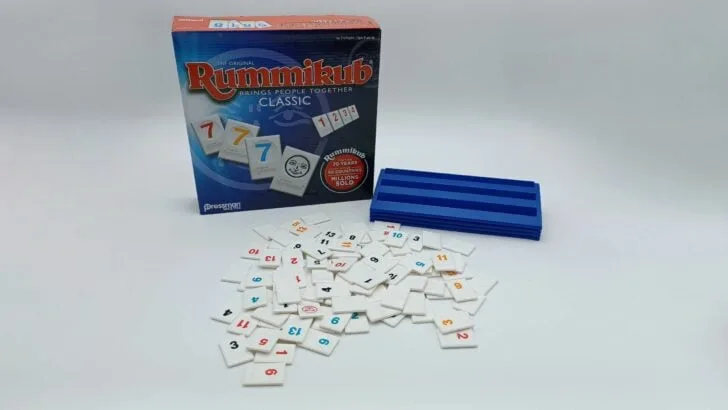
Rummikub Components
- 104 Number Tiles (two sets of 1-13 for each color)
- 2 Joker Tiles
- 4 Racks
- Instructions
Year: 1977 | Publisher: Ideal, Pressman Toy Corporation | Designer: Ephraim Hertzano
Genres: Family, Set Collection, Tile Placement
Ages: 8+ | Number of Players: 2-4 | Length of Game: 60 minutes
Difficulty: Light | Strategy: Moderate | Luck: Moderate
Where to Purchase: Amazon, eBay Any purchases made through these links (including other products) help keep Geeky Hobbies running. Thank you for your support.
For more board and card game how to plays/rules and reviews, check out our complete alphabetical list of board game posts.

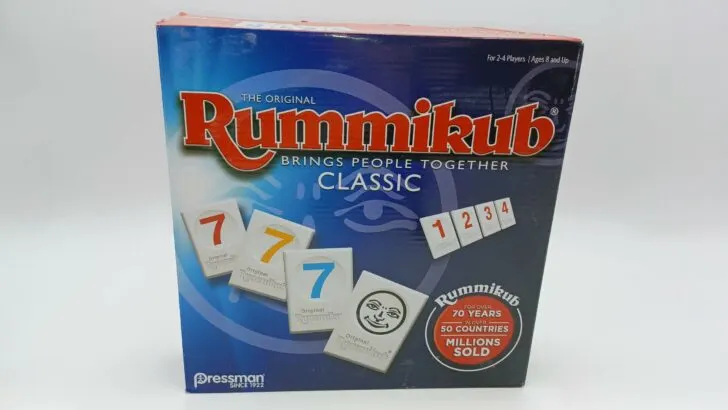
Heidi
Sunday 24th of December 2023
Hi! One more question. When I am building my sets can I add tiles to or subtract from another player to make my set as long as their sets and mine remain legal play?
Thanks!
Heidi
Thursday 21st of December 2023
Two questions: 1. So until a player can set down the correct tiles amounting to 30, they are prohibited from drawing tiles or playing any tiles against the opponents? 2. During a round, all tiles have ben taken with no plays left. Three players, in consecutive order, all have one tile remaining and its the same one (12 Red). Who wins the round?
Eric Mortensen
Friday 22nd of December 2023
For your first question, you need to play tiles adding up to at least 30. These tiles can only come from your own tile rack. If you are unable to make your initial meld (at least 30 points), you will draw a tile from the pool and end your turn. I should have made this more clear in the post.
Your second question is really interesting and is something that is not directly addressed in the rules. When all of the tiles have been drawn and no one can play all of their tiles, the players compare the amount of points they have left on their rack. The player that has the least points wins the round. In this case all three tied players would have the same amount so they would tie for the least points. Therefore I would say that they would all win the round scoring zero points from the tiles on their rack. If there is a fourth player that has a higher total of tiles in their rack, they will subtract twelve (the amount in the other players' racks) from their total to determine their negative points for the round. The three tied players would then score positive points equal to the negative points that the fourth player scored.
I would guess this scenario would be quite rare. Usually at least one player is able to play all of their tiles. If not there is usually a player whose total is less than the other players. This situation could occasionally happen though.
My answer to your second question is based on what is printed in the rules and my extrapolation from them. These are not the official rules for the situation. If the players you are playing with would like to handle the situation in a different way, I see no reason why you couldn't.